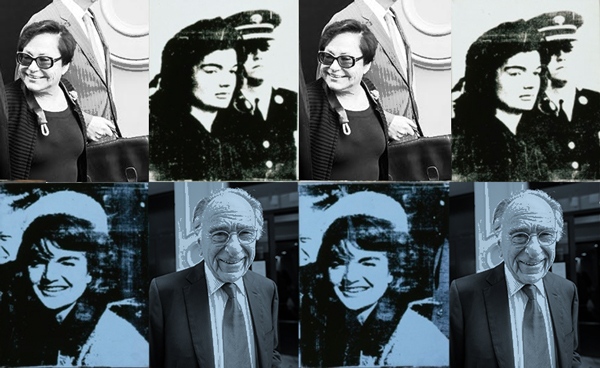Harry Macklowe was in a fist-bumping kind of mood.
As the hours dragged by on Wednesday, the billionaire developer took a breather from his high-stakes divorce proceedings and stepped out of the courtroom briefly, playfully greeting a photographer on his way back in. But Judge Laura Drager wasn’t in the mood, and she chastised Harry after he stopped to peer at a reporter’s laptop.
“Excuse me, Mr. Macklowe, please!” she said.
Perhaps Harry Macklowe is in love, seeing as he’s engaged to marry his mistress. It’s also possible the day’s testimony — Linda Macklowe’s art collection — was lighter fare after a forensic analysis of his real estate holdings last week, in which his lawyers cast a shadow over several of his projects (like 1 Wall Street and 432 Park) ostensibly to minimize their worth.
It’s anybody’s guess how much the couple’s collection is really worth — with estimates ranging from $625 million to $1 billion.
Related: Harry Macklowe shrunk Linda’s apartment and made his bigger: suit
But on Wednesday, Linda Macklowe’s lawyers tried to put numbers on the enviable array of postwar and contemporary sculptures and paintings.
Andy Warhol’s “Sixteen Jackies” has a fair-market value of $25 million, while Willem de Kooning’s “Untitled XXXIII,” had a fair-market value of $10 million, according to the testimony of Christopher Gaillard, deputy chairman of Gurr Johns, an art appraisal firm. The firm was hired by Linda Macklowe, a trustee of the Guggenheim Museum who is widely recognized as the brains behind the collection.
Other pieces included another Warhol painting — a self-portrait from 1986 — valued at $20 million, as well as a smaller bronze sculpture valued at $5 million, as well as one 18-foot painting whose size was a factor in the appraisal since it can be “difficult for clients [and potential purchasers] to house,” Gaillard said.
That hasn’t been a problem for the Macklowes, however.
Harry Macklowe has been known to display art in his office, while Linda Macklowe has used their East Hampton estate to showcase pieces from their postwar and contemporary art collection.
Linda is widely considered the architect of their collection, while Harry’s big thrill is outbidding others at auction, according to Vicky Ward’s “The Liar’s Ball.”
Either way, they’re “on top of” the market, Judd Tully, an art critic and editor-at-large at the international art news website Blouin Arinfo, told The Real Deal in 2015. “They attend art fairs and galleries to check out postwar, abstract and expressionist art.”
There were no art fairs or galleries on Wednesday — just court, where, for a sixth day, the estranged couple barely exchanged glances. On Tuesday, Linda Macklowe filed a separate suit accusing her soon-to-be ex-husband of shrinking her three-bedroom apartment at 432 Park Avenue into a modest one-bedroom. A spokesperson for the developer the apartment was “a gift,” and that Linda has categorically stated she doesn’t intend to live there.
Judge Drager had choice words for their attorneys — Peter Bronstein (for Harry) and John Teitler (for Linda), who began the day bickering over documents Bronstein was submitting into evidence.
“I don’t care what the two of you want to talk about,” she said. Turning to Teitler, she added, “Call your witness now or I’ll end this examination.”
